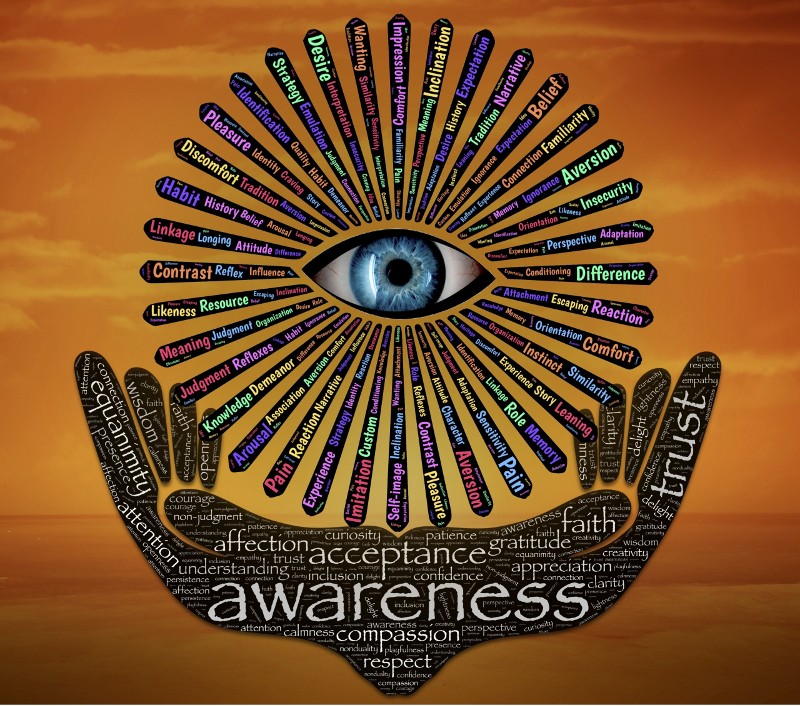EMDR, short for Eye Movement Desensitization and Reprocessing, offers a unique approach to therapy that goes beyond traditional talk therapy by engaging directly with the brain’s memory systems and the nervous system and is designed to help people overcome emotional distress and trauma. This method uses bilateral stimulation (BLS)—like following moving lights with the eyes, listening to beeps, and holding vibrating pulsators—to activate both hemispheres of the brain.
 EMDR not only aids in emotional and cognitive repair but also brings attention to physical sensations, recognizing how trauma can affect the body. Essentially, EMDR reprocesses painful memories, making them less disturbing and diminishing their impact, which promotes healing and transformation.
EMDR not only aids in emotional and cognitive repair but also brings attention to physical sensations, recognizing how trauma can affect the body. Essentially, EMDR reprocesses painful memories, making them less disturbing and diminishing their impact, which promotes healing and transformation.
For those interested in understanding the science behind EMDR, it’s helpful to know how this therapy targets specific brain areas. EMDR specifically targets the amygdala, which is responsible for our emotional responses, and the hippocampus, which plays a key role in storing memories. By stimulating these areas along with the prefrontal cortex, which governs rational thinking and decision-making, EMDR helps to move the traumatic memories from areas where they are stuck to more adaptive parts of the brain.
This process can lessen the ongoing painful impact of memories and transform negative cognitions (such as “I’m not good enough” or “I don’t matter”) into more constructive and empowering beliefs. As a result, it facilitates deeper emotional healing and helps you regain a sense of control and well-being.
EMDR was developed in 1987 by Dr. Francine Shapiro. She first published her findings in 1989, establishing EMDR as a recognized therapeutic method. Over the subsequent years, extensive research investigated its effectiveness. The therapy became widely accepted due to many studies confirming its success, especially in treating PTSD (Post-Traumatic Stress Disorder).
Today, EMDR is endorsed by institutions such as the American Psychological Association and the World Health Organization as an effective method for addressing trauma and other psychological stresses. This recognition is supported by clinical evidence and research into EMDR’s impact on the brain and its role in processing traumatic and distressing memories.
In my practice, I use EMDR to address a wide spectrum of trauma, recognizing that everyone experiences trauma to varying degrees. The word “trauma” originates from the Greek word for “wounding” and refers not to the events themselves but to our internal responses to these events.
We encounter overt traumas, known as “Big T” traumas, which are often life-threatening events (such as rape or physical abuse) linked to PTSD and can profoundly impact one’s sense of safety. Additionally, there are also “Little t” traumas, which influence one’s sense of self and include experiences like bullying, divorce, emotional abuse, humiliation, and loss of significant relationships. Oftentimes, these “Little t” traumas have a more profound impact on a person’s system, and these traumas are less commonly addressed in traditional therapy.
In addition to traditional EMDR, I also use somatic EMDR in my practice. This approach integrates the physical sensations and the nervous system into the therapeutic process. By focusing on the body’s sensations and responses, somatic therapy helps clients become more aware of their nervous system’s reactions and how they relate to pain and trauma.
This method is particularly effective in managing and expanding the “window of tolerance,” which is the optimal zone of arousal where a person can function most effectively without feeling overwhelmed or shutting down. By incorporating these bodily experiences, somatic EMDR facilitates a more holistic healing process.
In EMDR therapy, the concept of resourcing is used throughout treatment to help clients build up their emotional resilience and stability.
 This strategy enhances therapy by allowing clients to create internal safe places or to connect with figures that are protective, wise, nurturing, or powerful during therapy sessions. These figures can be either real or imaginary figures who bring a sense of comfort, guidance, and strength. Additionally, individuals imagine a “peaceful place” which serves as a mental retreat or psychological sanctuary where you can go to feel secure when emotional experiences become too intense.
This strategy enhances therapy by allowing clients to create internal safe places or to connect with figures that are protective, wise, nurturing, or powerful during therapy sessions. These figures can be either real or imaginary figures who bring a sense of comfort, guidance, and strength. Additionally, individuals imagine a “peaceful place” which serves as a mental retreat or psychological sanctuary where you can go to feel secure when emotional experiences become too intense.
By weaving these resources into the fabric of EMDR therapy, clients are equipped with valuable tools that facilitate emotional regulation and resilience. This approach not only supports them as they navigate through the processing of traumatic memories but also enhances their overall therapeutic experience, fostering a deeper, more enduring sense of healing and empowerment.
Additionally, clients can use these resourcing techniques at home between sessions to help cope with daily stressors or moments of distress, further extending the benefits of therapy into their everyday lives. This practice helps maintain emotional stability and reinforces the skills learned during therapy, providing continuous support and empowerment.
In EMDR therapy, the treatment process involves the therapist guiding you to recall distressing memories while simultaneously engaging in bilateral stimulation (BLS), which includes eye movements, auditory beeps, or tactile pulses. This approach activates various internal experiences—thoughts, feelings, images, memories, and bodily sensations—and is designed to facilitate a natural healing process. By observing these experiences during therapy, you engage your brain’s inherent healing mechanisms, allowing it to reorganize and heal from trauma-related issues.
Everyone’s experience is a little bit different, and there is no wrong way to experience EMDR. Your job is to be a passive vessel and to allow whatever is happening to happen. I will jump in and out to help you process whatever you are experiencing.
EMDR is based on the understanding that traumatic experiences can become “stuck” in the brain’s networks, disrupting emotional, physical, and mental well-being. The repeated sessions of BLS help to process these “stuck” memories, neutralizing the disturbing emotions associated with them, and reducing the impact they have on your life.
Additionally, EMDR transforms negative self-beliefs, such as feelings of inadequacy or worthlessness, into more positive and adaptive beliefs. As a result, symptoms subside, the past is no longer intruding on the present, and tools are developed to help individuals move forward and feel empowered.
The Adaptive Information Processing (AIP) model, which is central to EMDR therapy, suggests that our mental well-being is linked to how well our brain can process traumatic memories.
This model explains that our brain naturally tries to heal from upsetting experiences, but sometimes this healing process gets interrupted or blocked. When this happens, traumatic memories aren’t properly processed; they’re left in a raw, unprocessed state. These unprocessed memories stay emotionally intense, including persistent negative cognitions about oneself and the world.
EMDR incorporates the concept of dual awareness, a critical component of trauma therapies. This approach allows clients to remain grounded in the present while recalling past traumas, promoting a safer and more controlled healing environment. It helps balance the emotional and cognitive experiences, aiding clients in processing trauma without becoming overwhelmed.
EMDR therapy activates this natural healing process through bilateral stimulation (BLS), which mimics the eye movements observed in REM sleep—a vital sleep stage where our brain processes the emotional experiences of the day. This stimulates memory reconsolidation, where memories are recalled and altered with less distressing information before being stored anew, allowing for healthier integration into the brain’s memory networks . As a result, it empowers clients to reshape their trauma narratives into stories of resilience and recovery. In turn, clients find relief and develop new perspectives on their experiences, fostering personal growth and healing.
 I became an EMDR therapist to deepen the healing process for my clients, as trauma often triggers negative beliefs and painful psychological symptoms that affect their overall quality of life. Through my training and experience in EMDR, I have witnessed firsthand the remarkable benefits it offers, from immediate relief from the emotional intensity of traumatic memories to long-term psychological resilience and improved well-being.
I became an EMDR therapist to deepen the healing process for my clients, as trauma often triggers negative beliefs and painful psychological symptoms that affect their overall quality of life. Through my training and experience in EMDR, I have witnessed firsthand the remarkable benefits it offers, from immediate relief from the emotional intensity of traumatic memories to long-term psychological resilience and improved well-being.
EMDR therapy is particularly powerful because even a single session can significantly reduce the emotional weight of traumatic memories, easing anxiety and enhancing mood. Over time, this therapy leads to profound changes, reducing symptoms of PTSD, trauma, anxiety, depression, and addiction. It enhances emotional resilience, helping clients manage stress and improving their self-esteem, which often results in healthier and more satisfying relationships.
Moreover, EMDR helps clients become more attuned to their bodies, increasing awareness of somatic sensations and the functioning of their nervous system. This, in turn, fosters a healthier relationship with their body, integral to their overall healing.
By addressing the root causes of distress, including negative cognitions created by trauma, EMDR not only alleviates symptoms but also promotes a more balanced and constructive life perspective, enhancing the client’s felt sense of security and well-being. This method has proven effective, affirming my deep commitment to and belief in EMDR’s transformative impact.
In my therapy sessions, I combine Internal Family Systems (IFS) with EMDR to deepen the healing process. This approach helps in relieving symptoms and also promotes the integration of the Self (our core essence that possesses inherent wisdom and healing capacity), helping clients to harmonize their internal system and encouraging a more adaptive way of being.
If an unresolved, distressing experience from your past has made you feel anxious, on-edge, hopeless, or unsafe, Eye Movement Desensitization and Reprocessing (EMDR) is an effective, evidence-based therapy that can change your relationship with your trauma.
For more information about how EMDR treatment can help you, contact me. All sessions are available in-person to residents local to Brookhaven, GA, or online to residents throughout Georgia.
©2024 - Lauren DeRossette Counseling
